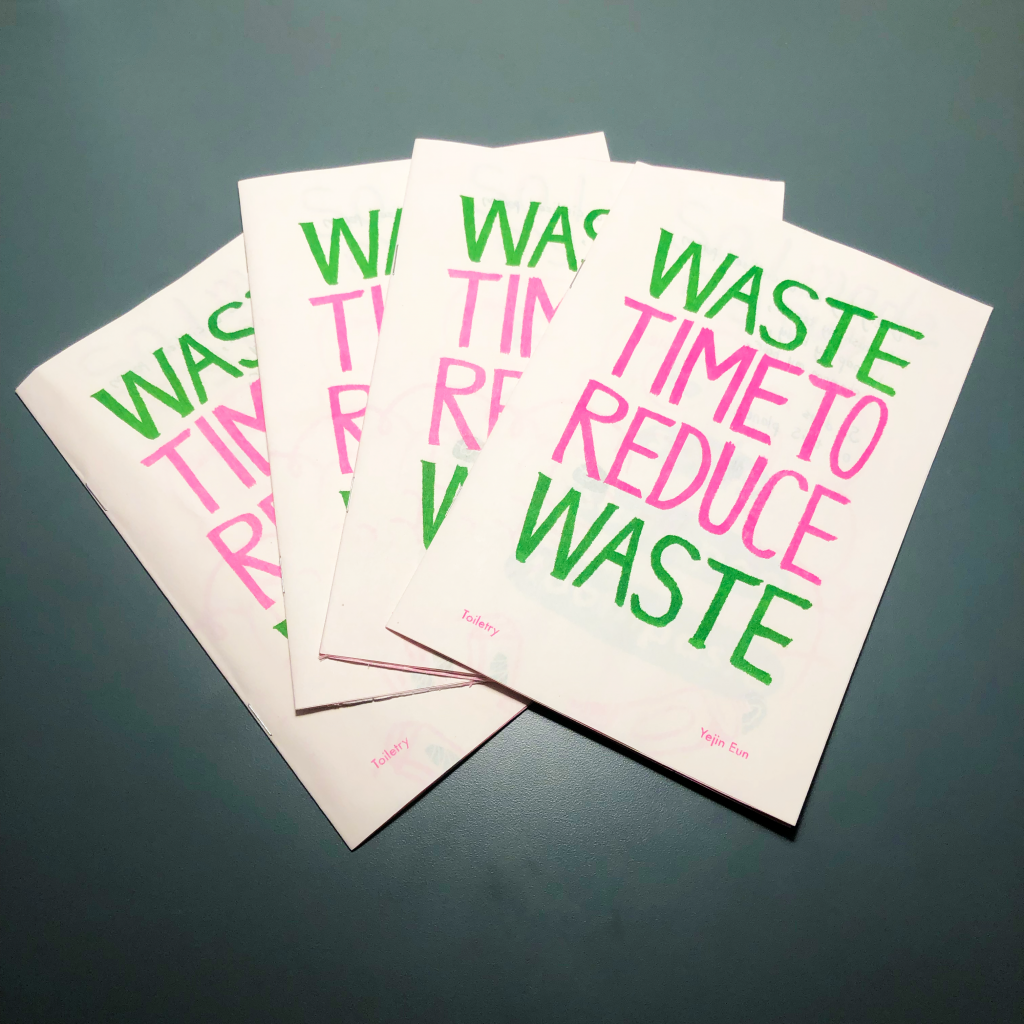
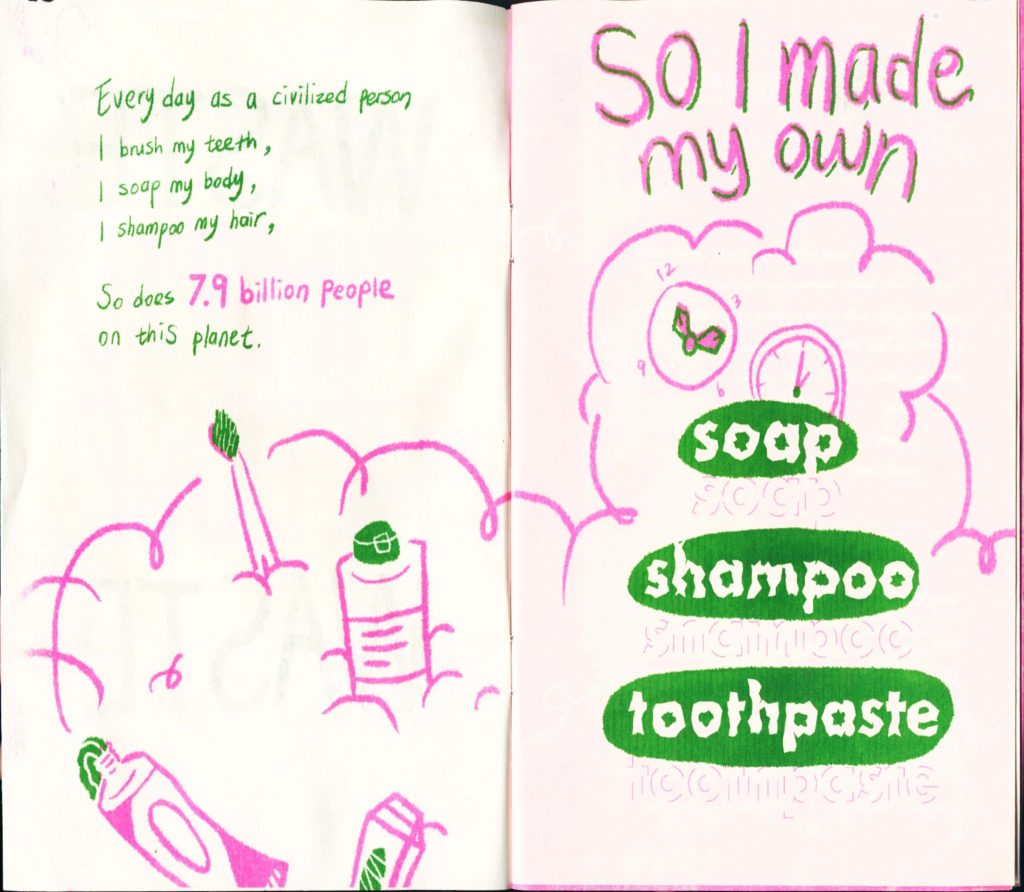
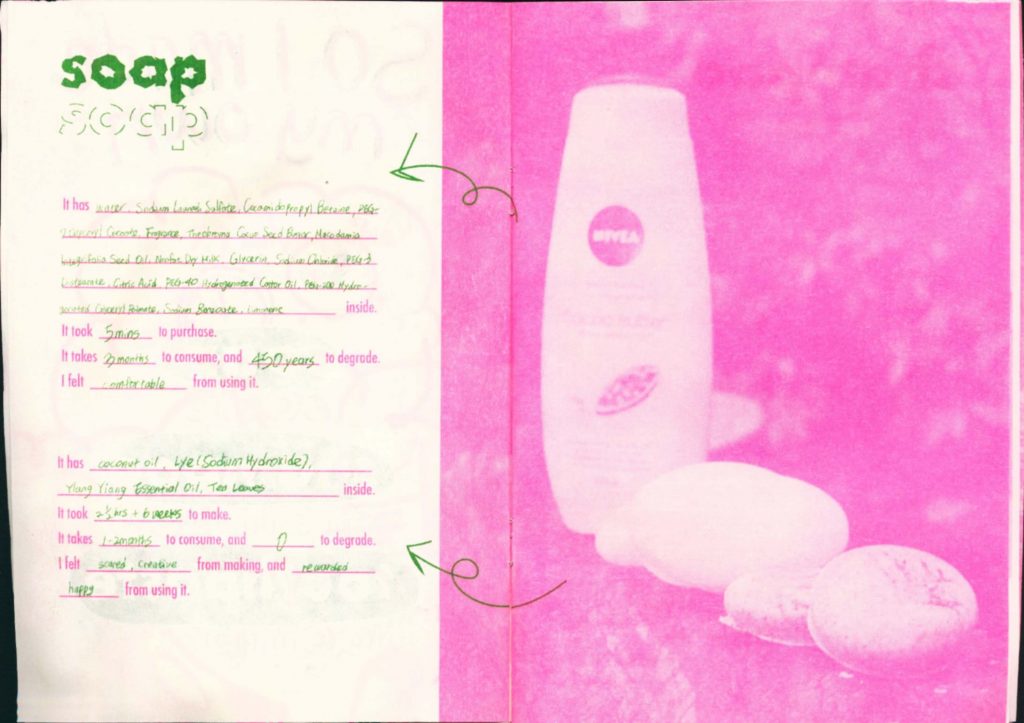
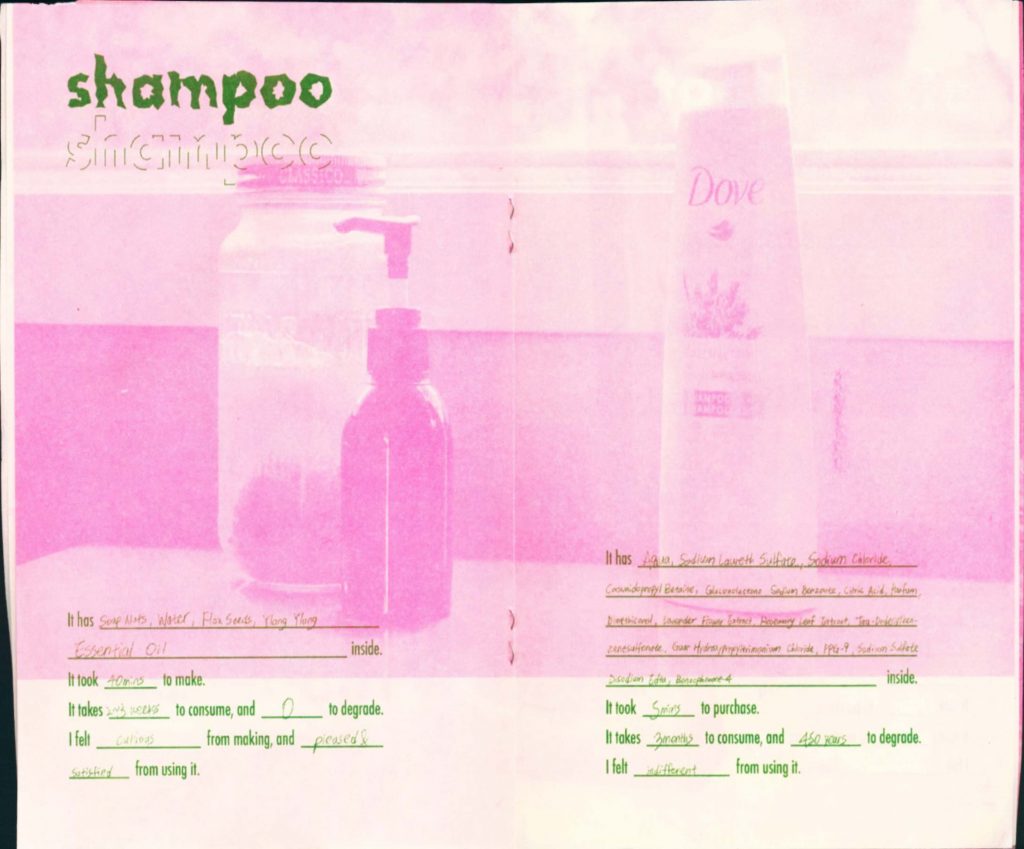
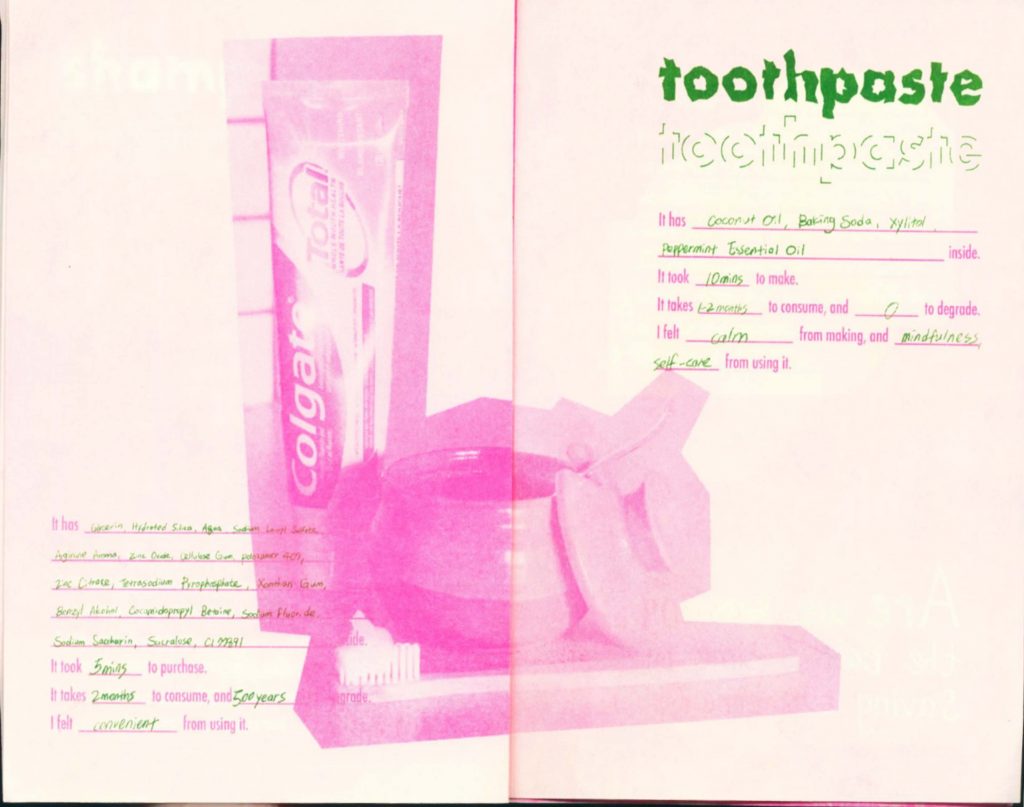
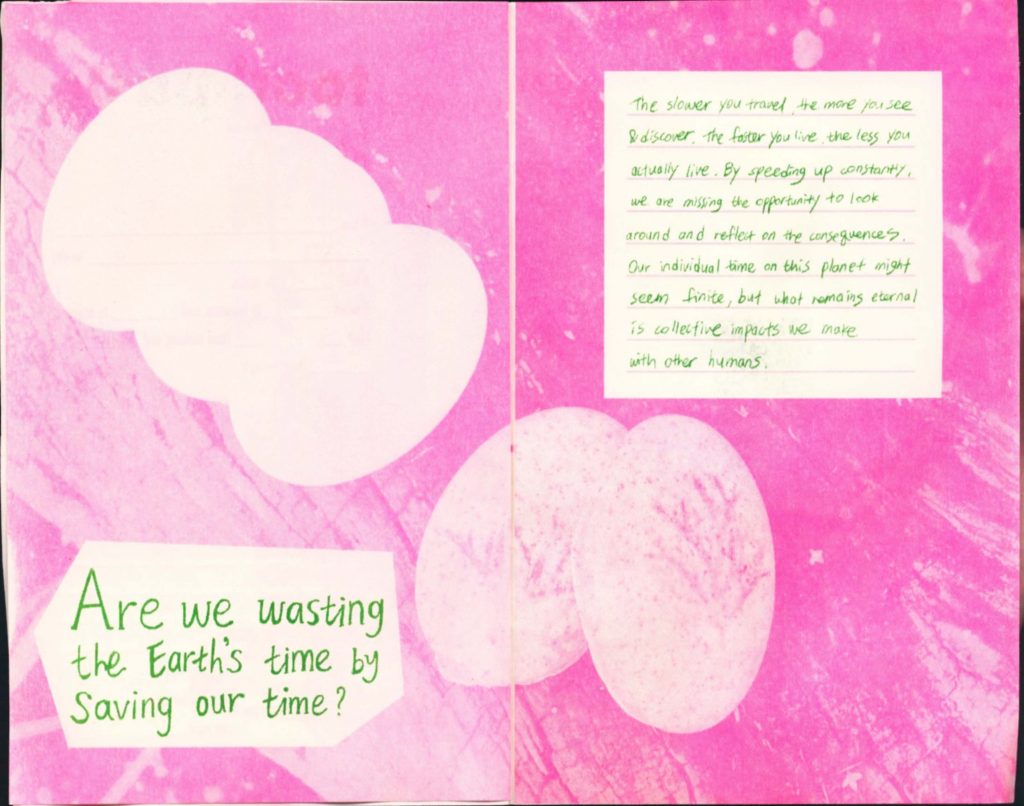
Prompt 4: Inquiry
About four years ago, I started learning the environmental impact that a modern human individual causes. I got deeply engaged with low-impact lifestyles and started educating myself to reduce my waste in day-to-day life. I minimized using mass-produced products and started making my toothpaste, hair products, food. During this personal transition, especially after becoming a vegan, my friends and family also began to change their attitudes and practice sustainability on their level. Seeing the impacts I made on other people has motivated me to continue my sustainability journey. However, after moving to Canada for my master’s degree, I noticed how quickly my behaviour has changed. I was consuming things mindlessly. Due to the lack of time management and financial stability, my priority had to be changed. The convenience and efficiency of consumption became more “valuable” to me. This reflection on my personal experience instinctively birthed my research question: What can design do to help people engage with daily making practice rather than short-sighted quick consumption? How can we bring back the good old way of living, where we pay attention to surroundings and make things from scratch with natural materials around us, for individual pursuit of sustainability?
My research questions tie strongly around the relationship between modern capitalistic society and its perception of time. Time is quantified and measured as resources, just like money. The overflow of digital productivity tools shows our fear of wasting time. Increased obsession with efficiency and productivity constantly pressures us to not waste time. But is it such a bad thing to waste time? Are we wasting the Earth’s time by saving our time? Then what is the true meaning of a “waste” of time?
To identify a small project that begins this larger journey, I decided to make my own toiletry.
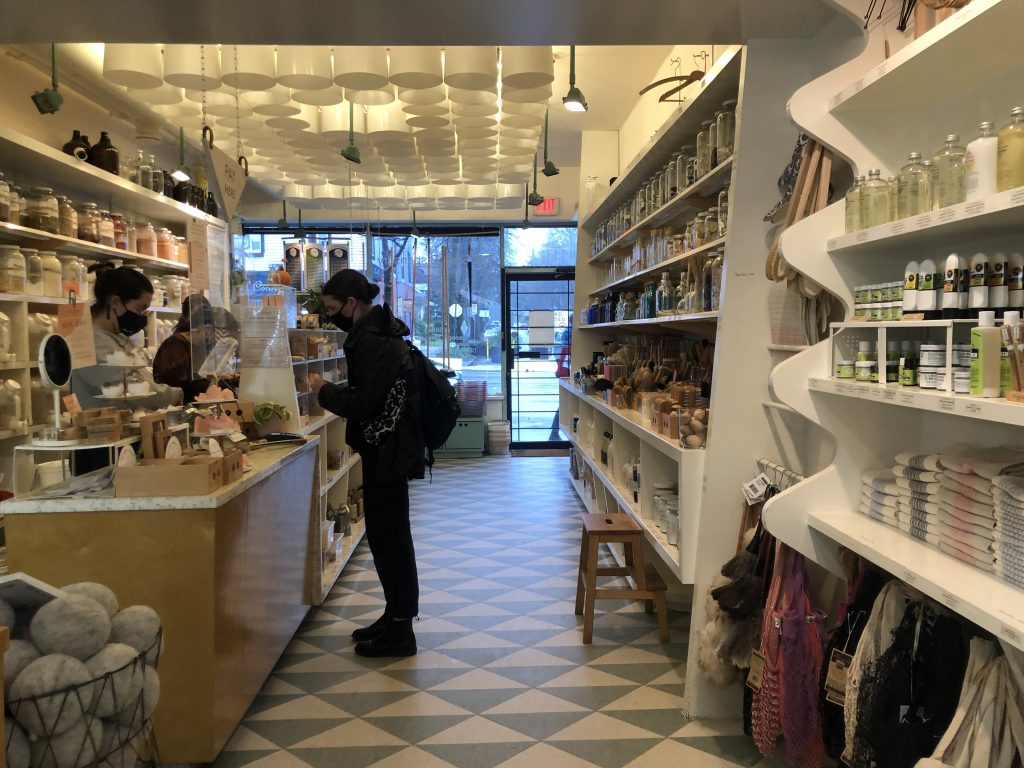
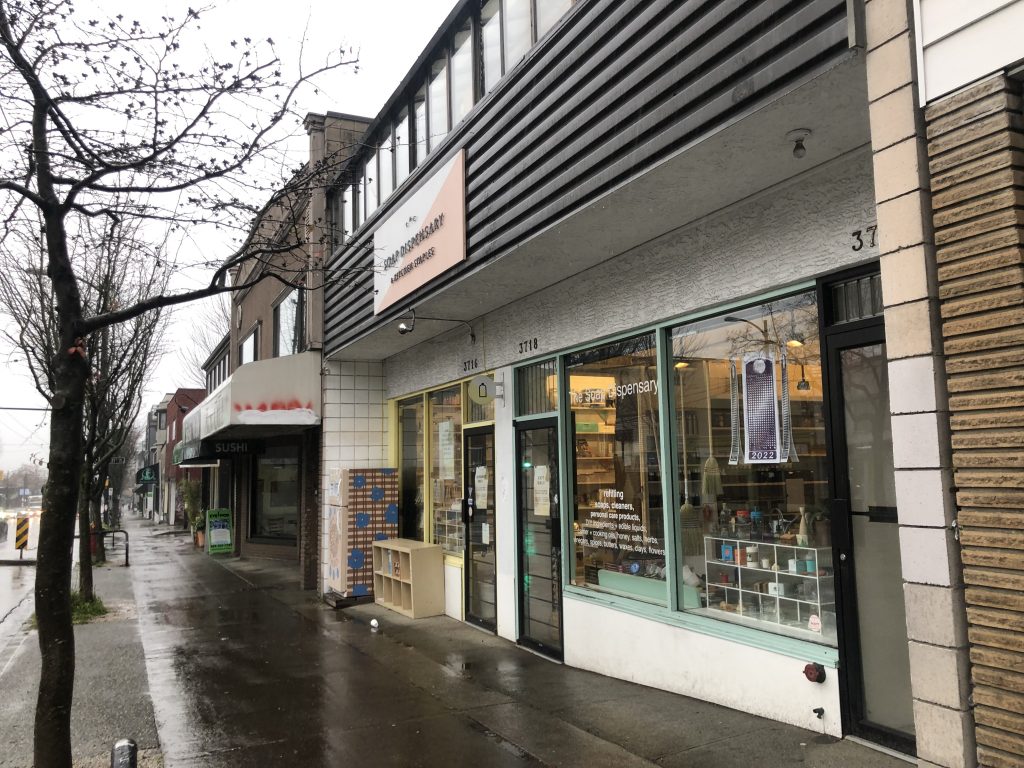
I tried to purchase the ingredients from a zerowaste store in Vancouver called The Soap Dispensary and Kitchen Staples on Main street. This store is Vancouver’s first dedicated refill shop, so you can bring your own containers to shop without packaging.
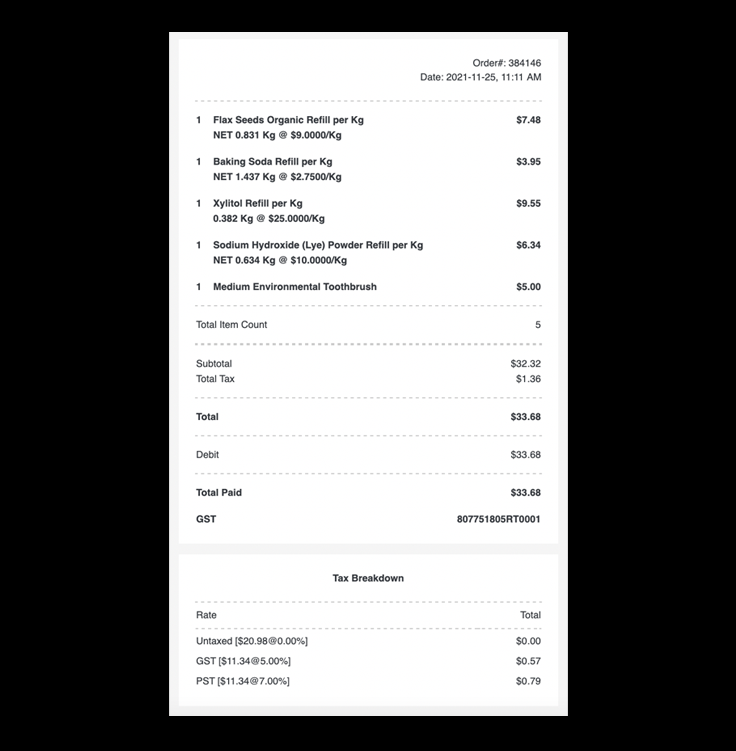
1. How to make your own toothpaste
My recipe is based on a YouTube video by Trash is for Tossers.
1-1. Gather Ingredients
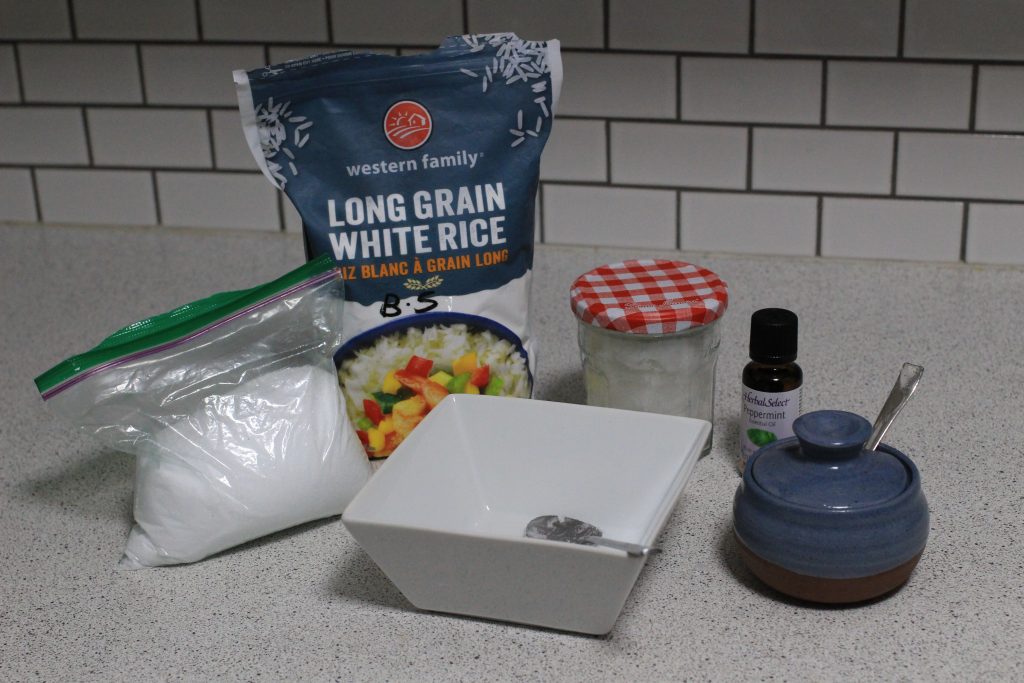
🥣 Ingredients
- 2 Tsp of Xylitol
- 2 Tbs of Baking Soda
- 7 Tbs of Coconut Oil
- 30~40 Drops of Peppermint Essential Oil
- A Bowl and Spoons to Mix
- A Jar for Your Toothpaste
⏳ Time
10 minutes
🦷 Benefits of Xylitol
Xylitol is found in small amounts in many fruits and vegetables. Xylitol can starve the harmful bacteria in your mouth, reducing plaque buildup and tooth decay. This can help prevent dental cavities and inflammatory gum diseases. Therefore, it is also a common ingredient in sugar-free chewing gums, candies, mints, diabetes-friendly foods and oral-care products.
🥥 Benefits of Coconut Oil
Current research shows that coconut oil may help to decrease plaque buildup on your teeth and reduce inflammation to fight gum disease. In one pilot study, oil pulling with coconut oil for 30 days significantly decreased plaque buildup and signs of gingivitis in 60 participants with plaque-induced gum disease.
1-2. Mix Everything
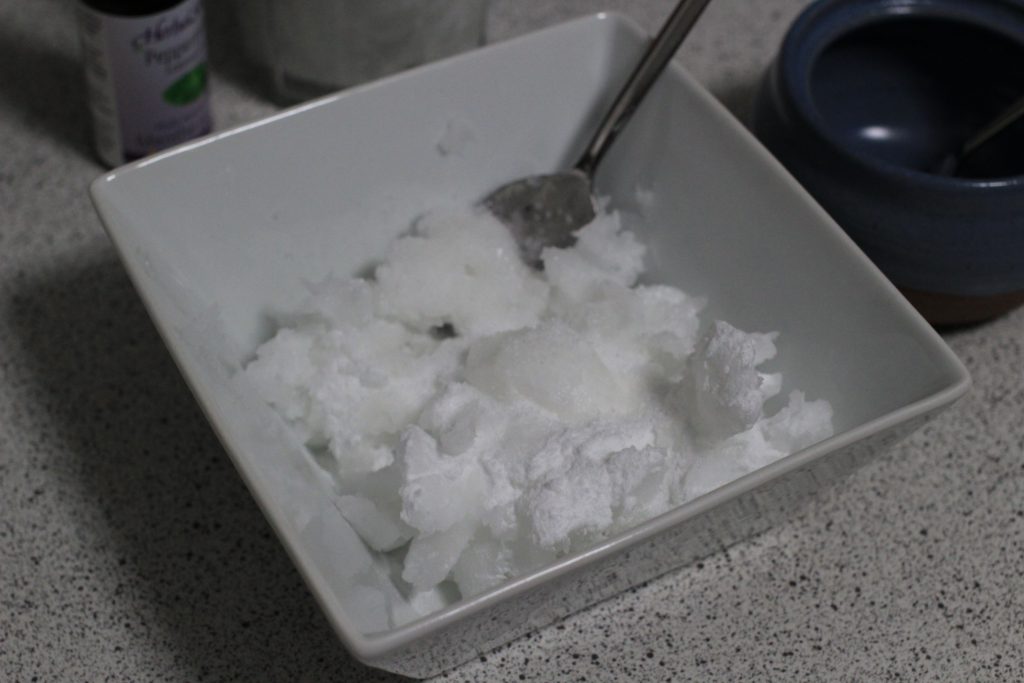
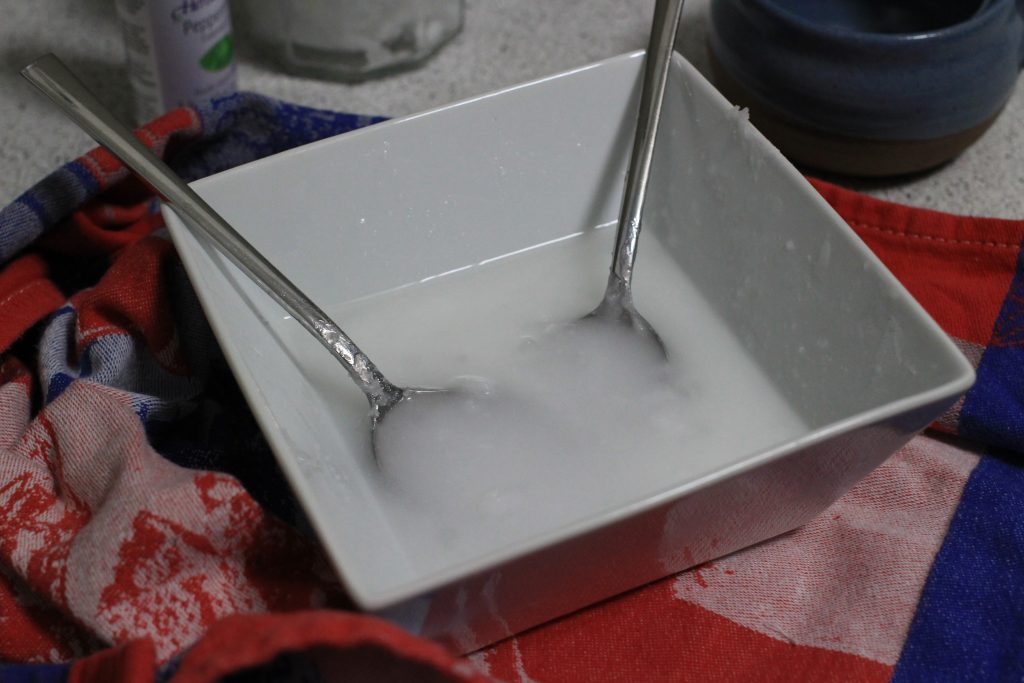
Put all the ingredients into a bowl and mix everything. Coconut oil has a melting point of 78 ℉ (25.56 ℃). To stir everything thoroughly, pop the bowl in the microwave for 30 secs or put it into a bowl of hot water to melt.
1-3. Voilà! All-natural DIY Toothpaste
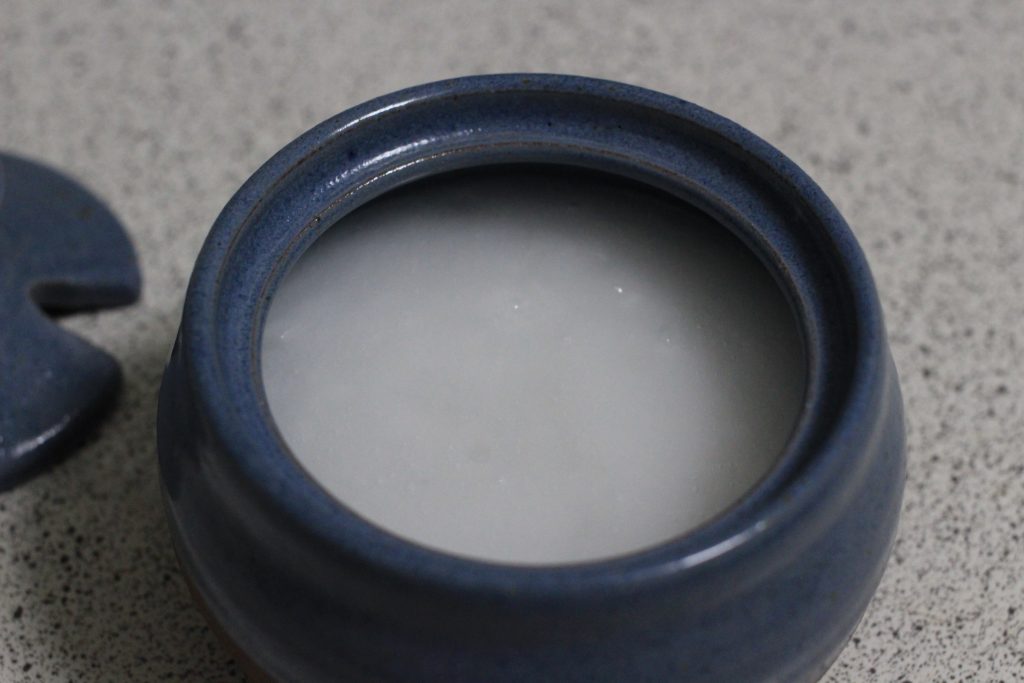
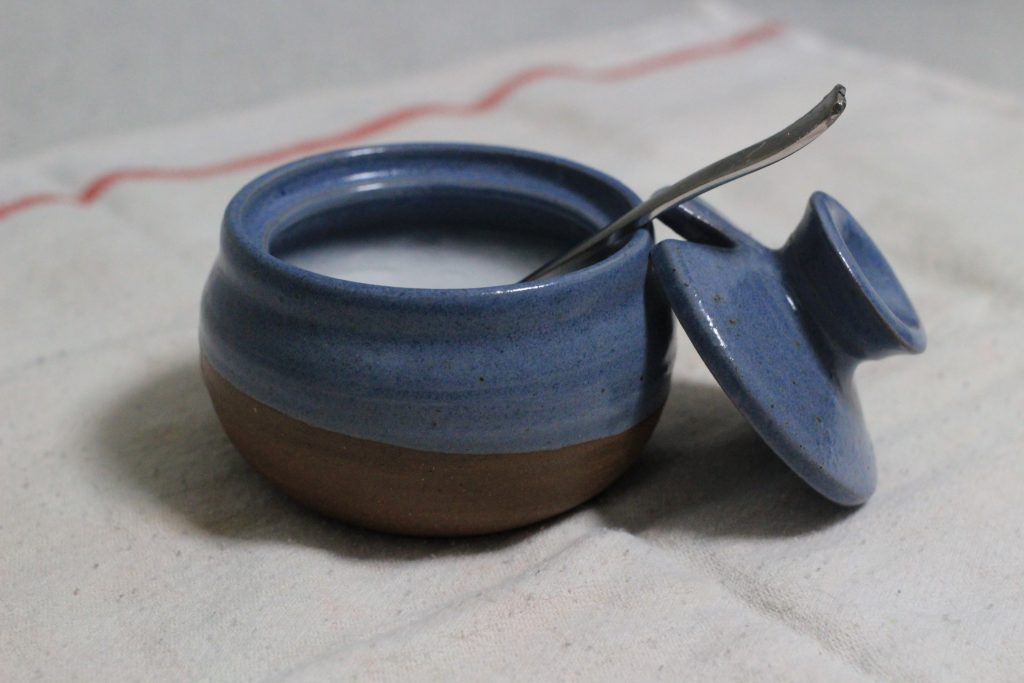
You can run it through hot water or microwave it for 30 seconds to soften and keep it in the fridge in summer to harden.
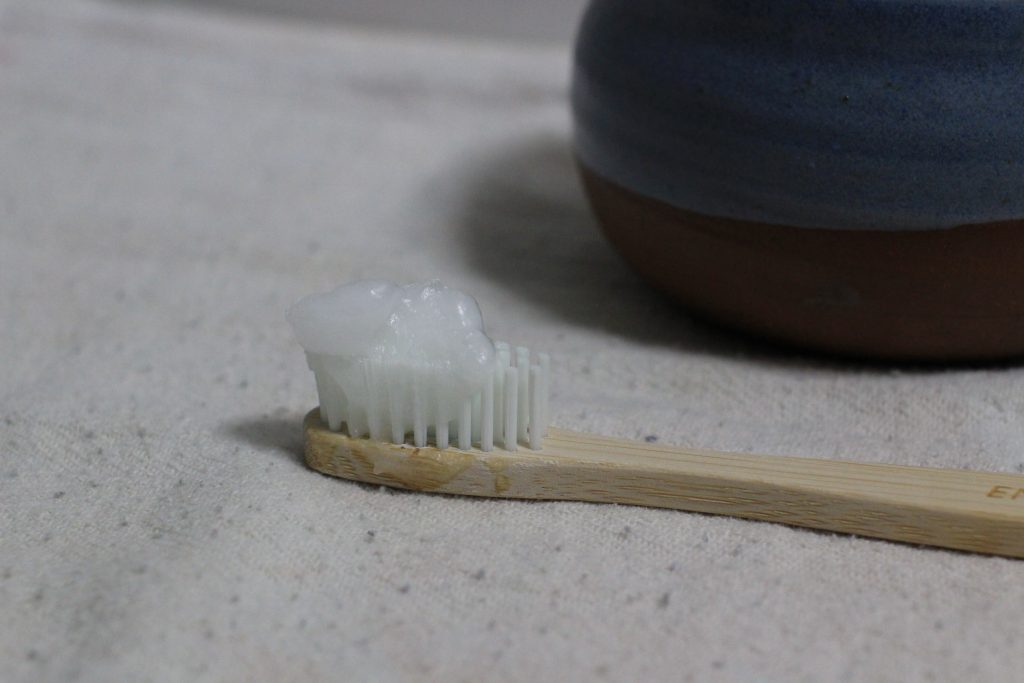
2. How to make your own shampoo
My recipe is based on a YouTube video by Sewing Lara.
2-1. Gather Ingredients
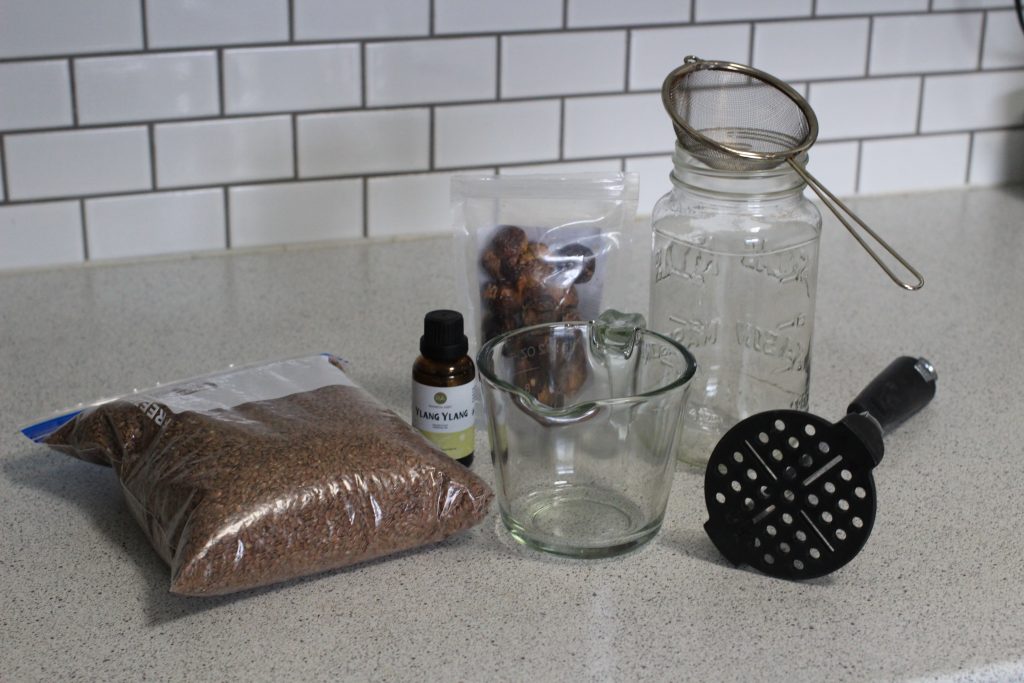
🥣 Ingredients
- 3~4 Cups of Water
- 2~3 Tbs Flaxseeds (1/4 Cup)
- 13~15 Soap Nuts
- 10 Drops of Ylang Ylang Essential Oil
- A pot
- A Strainer
- A Potato Masher
- An Empty Bottle (I used a recycled pasta jar)
⏳ Time
40 minutes
2-2. Boil the nuts and seeds
Boil the soap nuts & flaxseeds with water for 10 minutes, reduce heat and simmer for 20 more minutes.

🥜 Benefits of Soap Nuts
The shells of the soap nut contain a natural soap, called Saponin. When the nutshells absorb water, the saponin is released, which creates a soaping effect. Soap nuts are known to be antimicrobial which makes them an excellent alternative to chemical detergents. Soap nuts are also rich in Vitamin A and D. The nutrients in soap nuts provide strength to the roots of your hair which foster hair growth.
🌱 Benefits of Flaxseeds
Flaxseed creates a gelatine texture when it is boiled. This gel helps hair grow faster and longer by providing nourishment to the hair follicles. The presence of Vitamin E provides nutrition to the scalp and reduces free radical damage. Track your hair growth before and after using the natural shampoo to see the difference yourself!
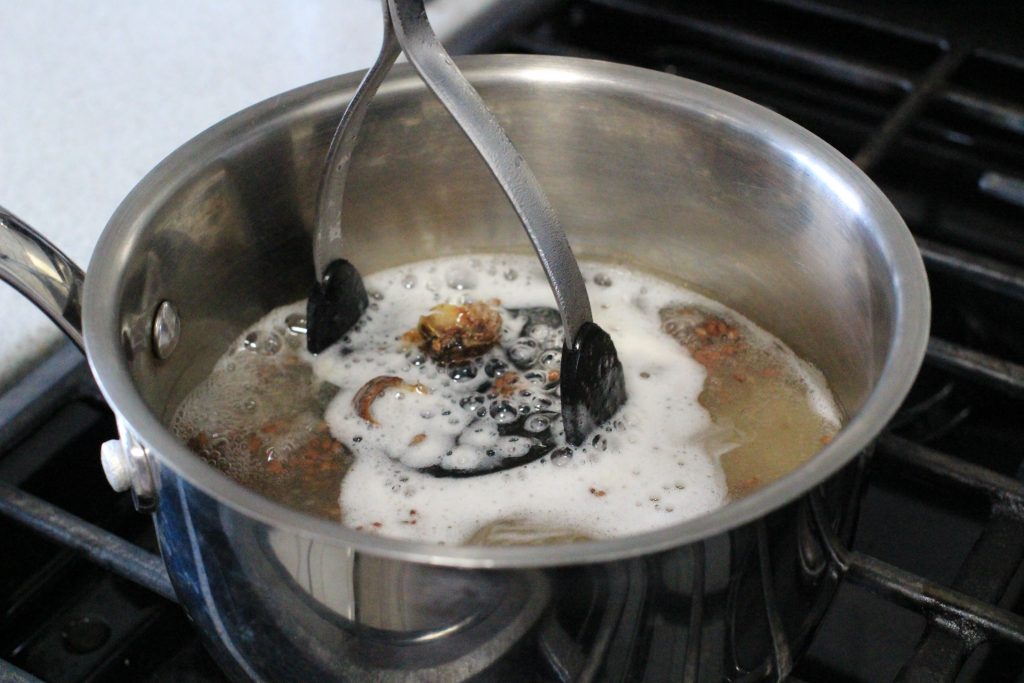
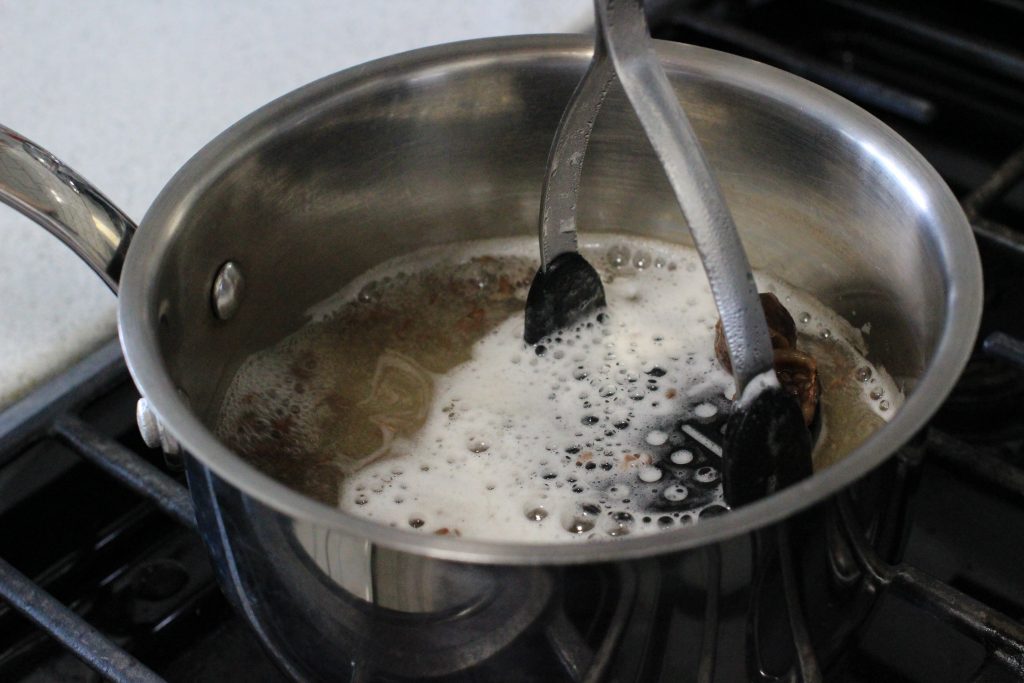
You can mash the nuts with a potato masher to bring out the most saponin while they are simmering.
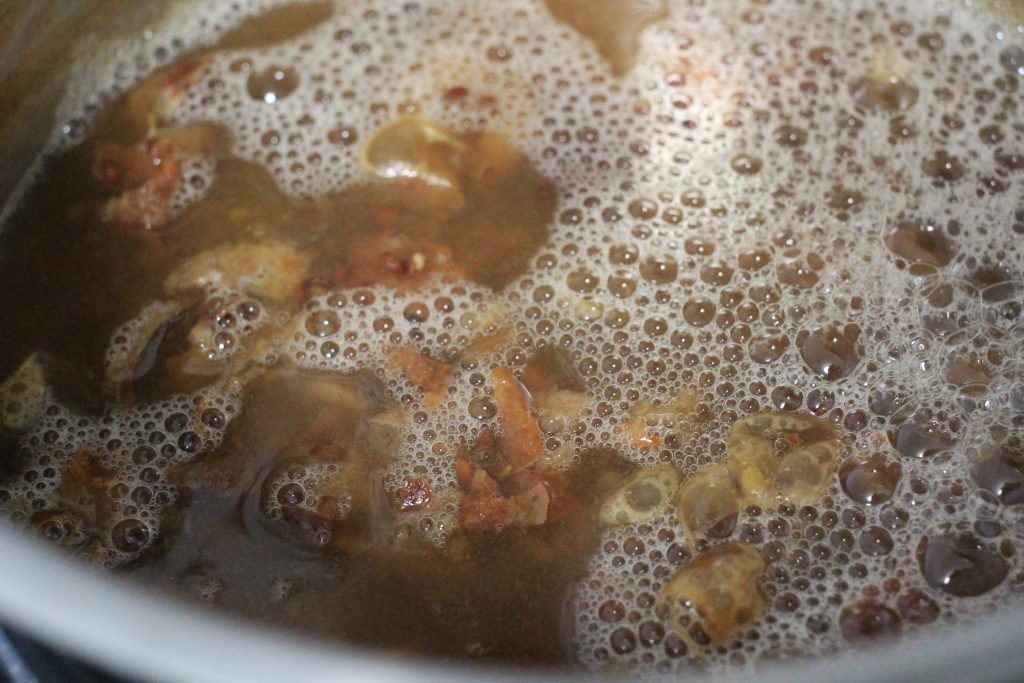
Once it is simmered for 20 minutes, check if the liquid is thickened up enough. You can also add extra water while boiling if the consistency is too thick.
2-3. Drain the mixture
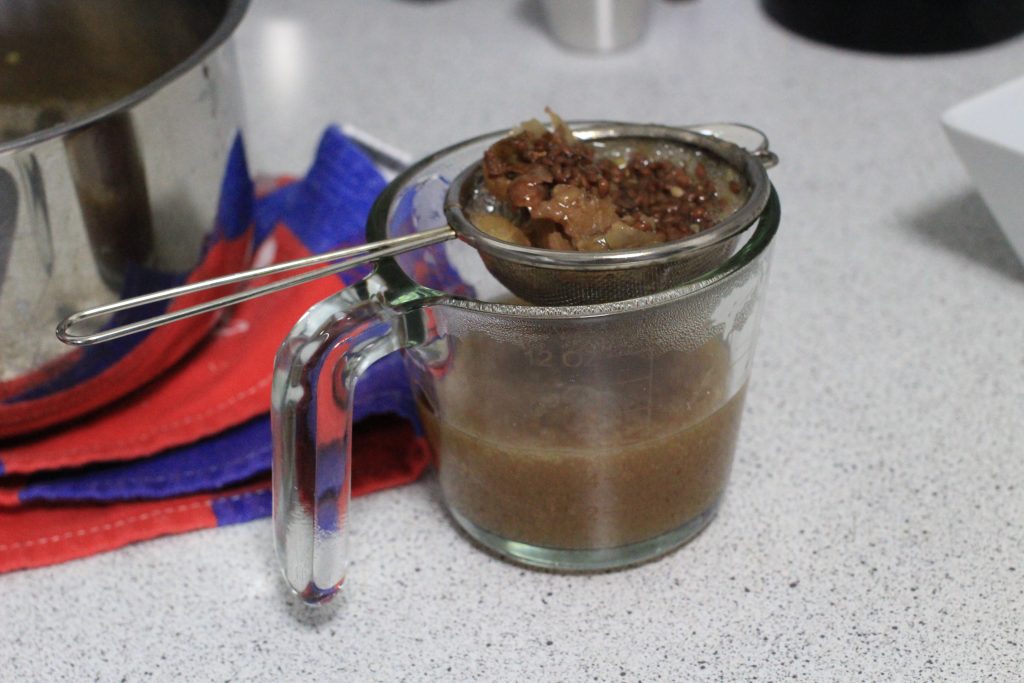
Use a strainer to drain the liquid. Soap nuts can be reused up to 6 times, so I kept them in the freezer for the next use.
I squeezed more juice out of the strainer with a spoon and poured the shampoo into a jar. Once it cools down, add 10 drops of essential oil of your choice. I added Ylang Ylang to mine.
2-4. Store the shampoo jar in the fridge
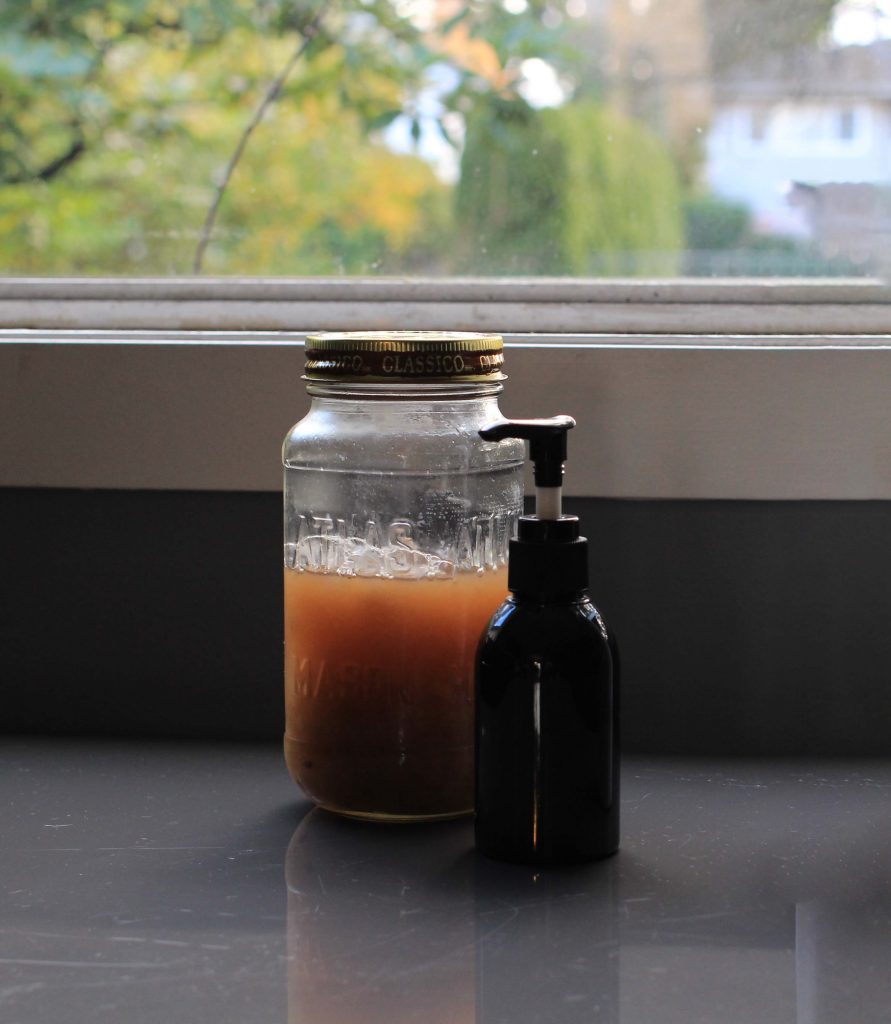
Your all-natural DIY shampoo is ready to go! Store the jar in the fridge until use.

3. How to make your own soap
My recipe is based on a Youtube tutorial by Bottega Zero Waste.
3-1. Gather Ingredients
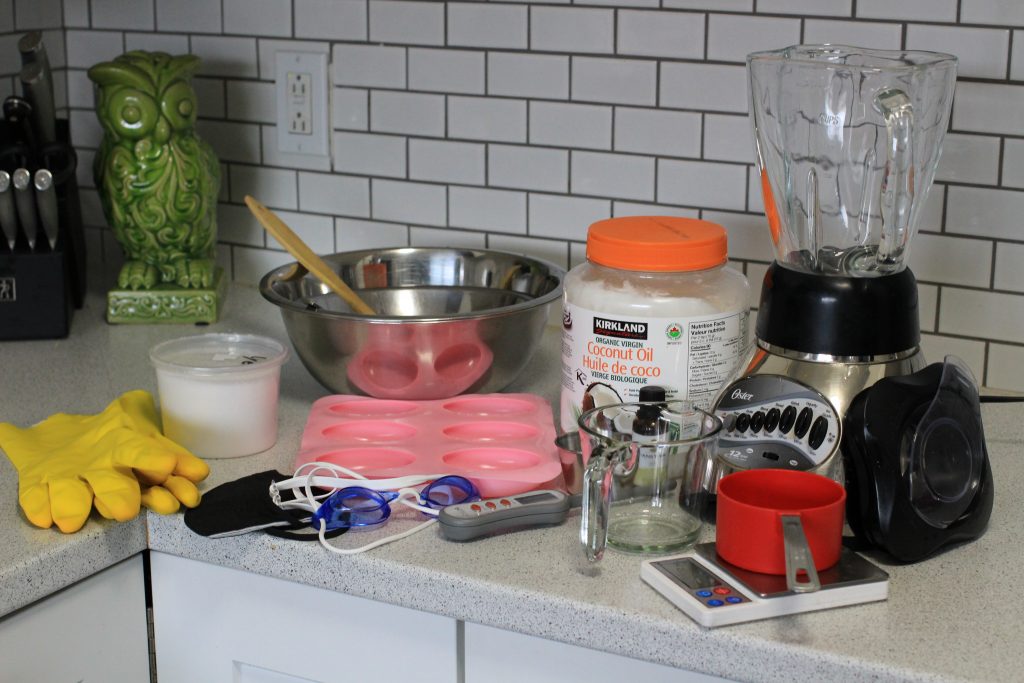
🥣 Ingredients for making 2 soaps
- 150g of Coconut Oil
- 22g of Lye (Sodium Hydroxide)
- 44.64g of Water
- 2g of Essential Oil of Your Choice
- Soap Molds
- A Spatula
- Measuring Cups
- A Bowl to Melt Coconut Oil
- 2 Stainless Bowls for Mixing
- A Thermometer
- A Scale
- A Blender (Preferably hand blender)
- Safety Gears 👩🔬 Gloves, A Mask, Goggles (I used swimming goggles)
⏳ Time
2 ½ hours to make 6 soaps with 2 different additives + 4~6 weeks to cure
3-2. 🦺 Safety Guide: Working With Lye
In order to make soap, oils must emulsify with lye, which begins the saponification process. During this process, it’s important to make safety a top priority. Sodium hydroxide lye is highly caustic and has the potential to burn the skin. Like driving a car, sodium hydroxide is safe when handled properly. But because lye has the potential to be extremely dangerous, it’s important to take every safety precaution.
- ALWAYS wear goggles, gloves, masks, and protective clothing when handling lye.
- NO short sleeved shirts, short pants, or sandals. Wrap yourself up to prevent any situation getting lye on your skin.
- ALWAYS work with lye in a well ventilated area.
- Remove contaminated clothing immediately.
- Clean up spills immediately.
Find more information about the safety guidelines in this YouTube video LYE 101: Everything A Beginner Soap Maker Needs To Know by Royalty Soaps
3-3. Melt coconut oil & Make lye solution
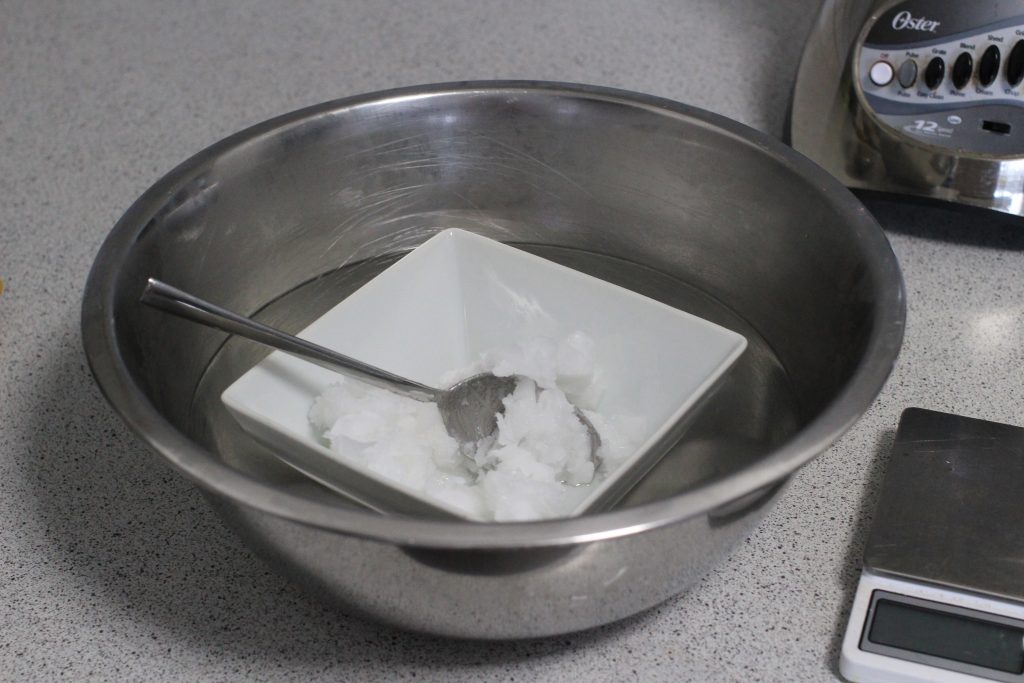
Once you have the correct amounts for your recipe, start melting the coconut oil. I put the coconut oil bowl into a bowl of hot water to melt but you can pop it in the microwave as well.
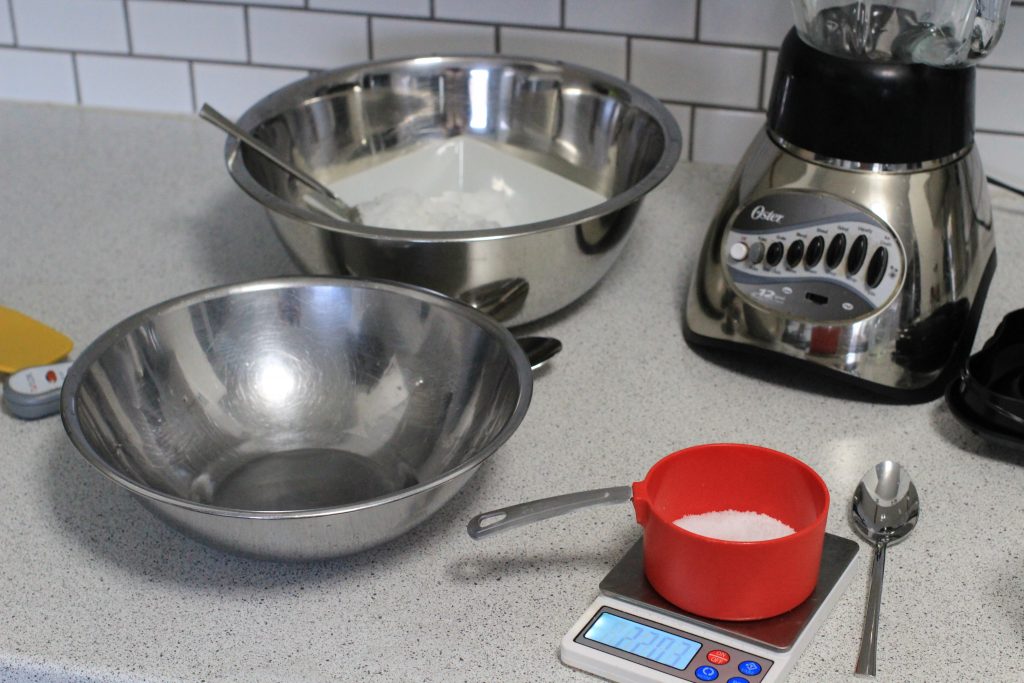
Whilst wearing safety gears, add the lye to the water in a heat safe Pyrex, or stainless steel or heavy duty plastic bowl. Remember, always add lye to water, never water to lye! Doing so can cause the lye to expand, or erupt, out of the container.
3-4. Wait till the temperature drops to 110℉
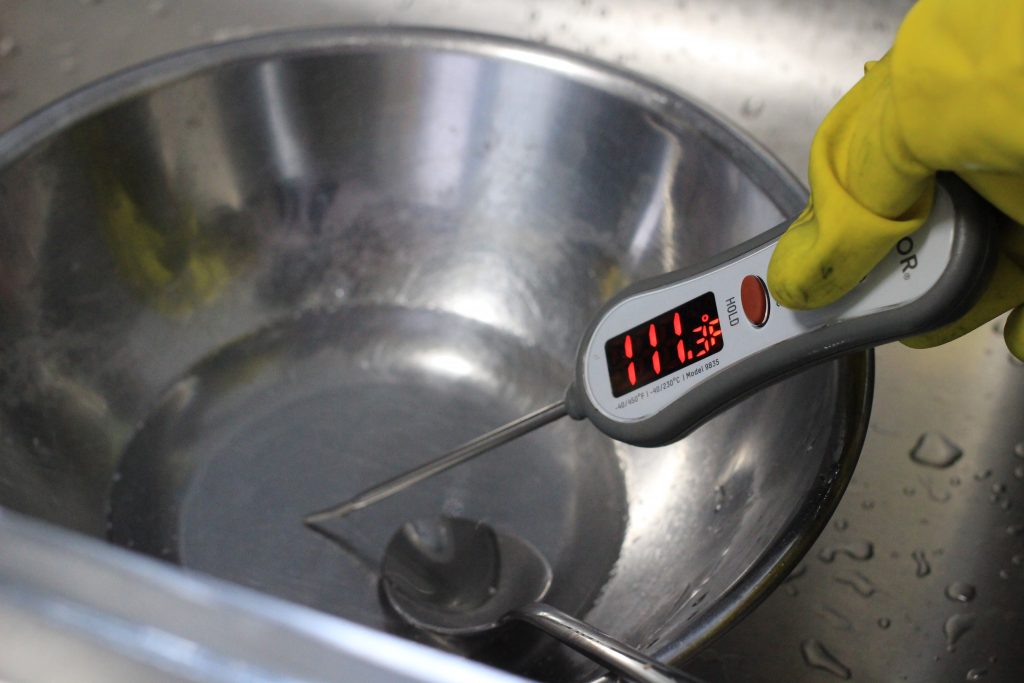
When the lye solution and coconut oil are at about 110℉ (43℃), we can slowly pour the lye onto the coconut oil, stir with a spatula, and start blending. It’s better to use a stick blender but I used a normal blender I have at home. You can also use a cream whipper to manually mix the oil and lye, it will just take more time and effort.
3-5. Add additives & Blend until the soap starts to trace
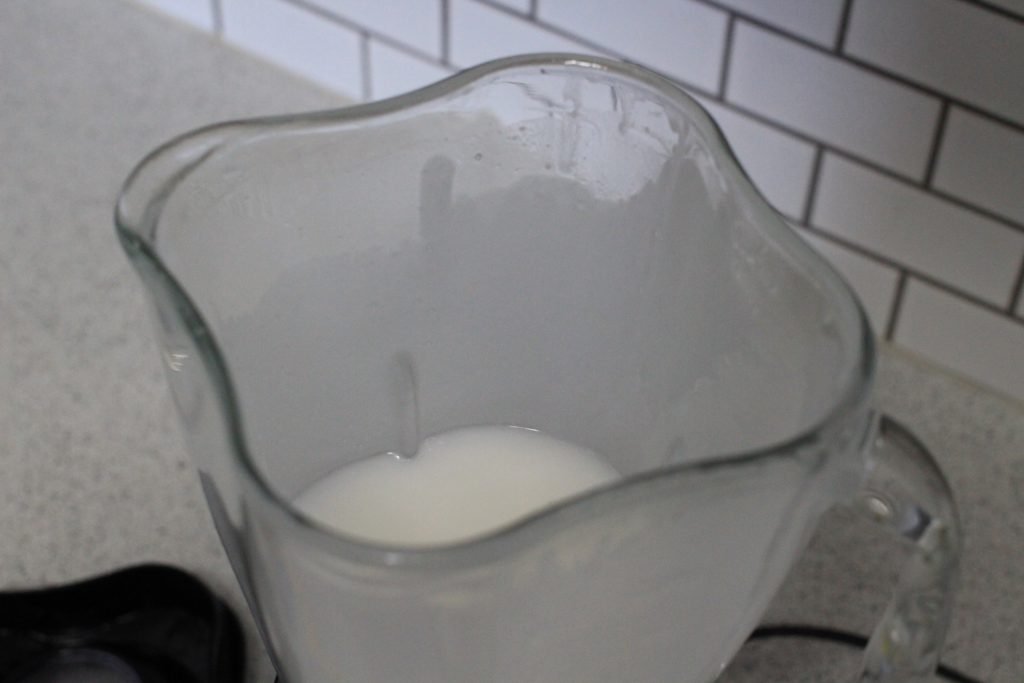
Blend the mixture with additives of your choice (I used ylang ylang essential oil) until it achieves “trace.” Trace is when the mixture leaves a trail when dripped, which means the soap has thickened and blended enough to form a stable emulsion.
3-6. Mould & Cure the soap
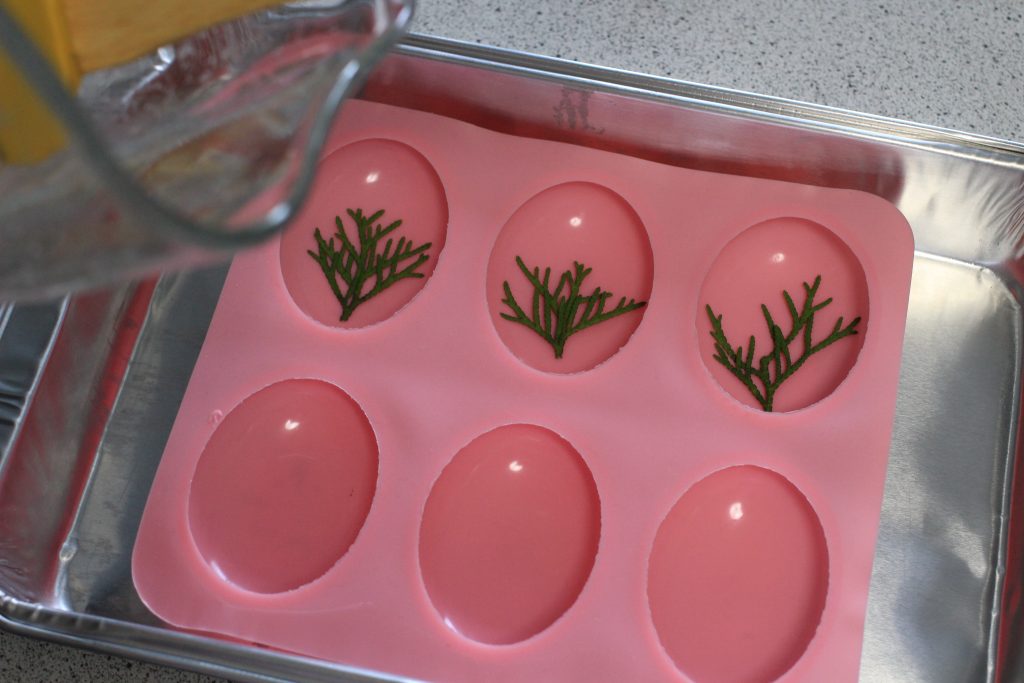
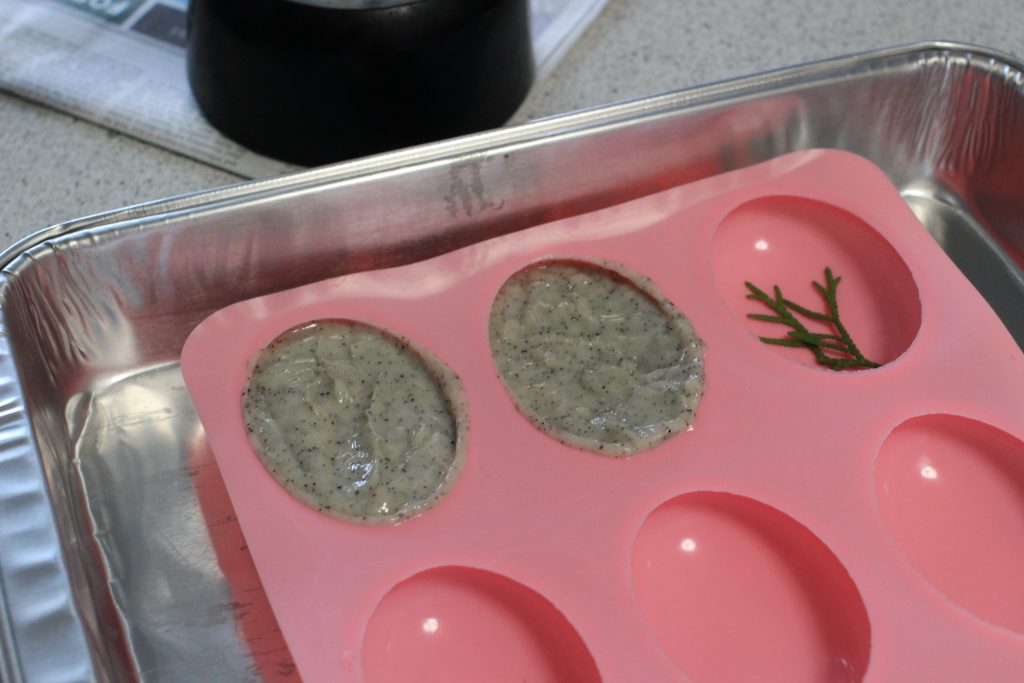
Once we’ve achieved trace, it’s time to mould! Pour the soap into the mould, let it rest for 24 hours before you unmould it. After removing soap from the mould, the soap needs to cure for four to six weeks. Soap should be stored in a cool, dry and well ventilated space for curing and during this time the water and lye used in the recipe evaporate.
One of the main reasons to cure homemade soaps is that when they are first made, they tend to be on the softer side. A soft soap will dissolve away more quickly as it’s used, meaning that your uncured soap won’t last as long as one that has been allowed to dry and harden.
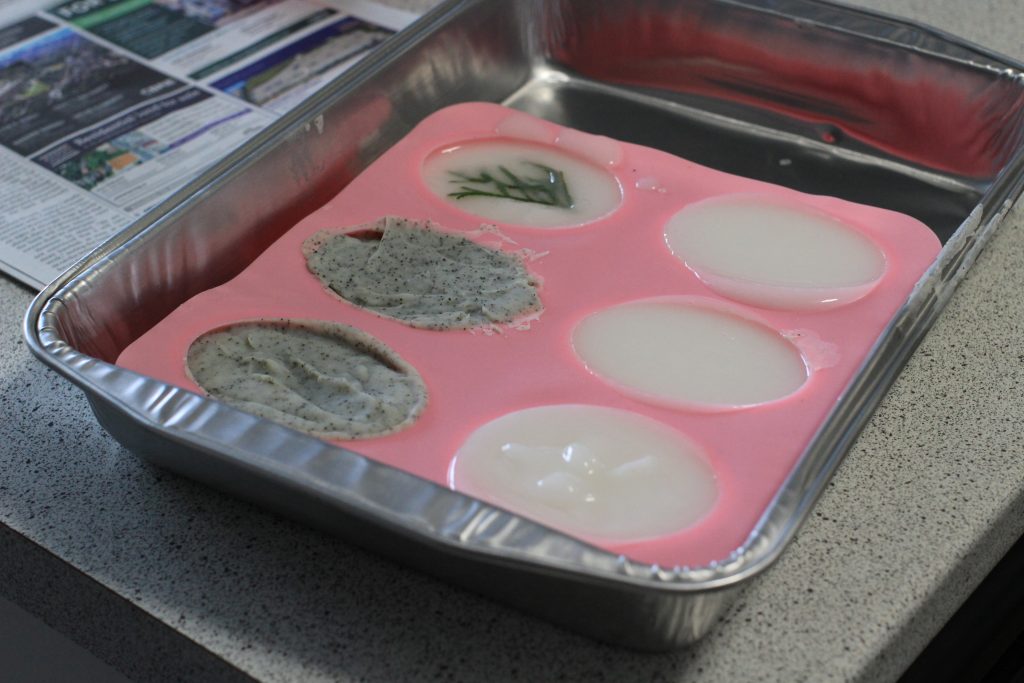
The two dark soaps on the top left are based on coconut oil with dried chai tea leaves and ylang ylang oil, and the white soaps are without the tea leaves.
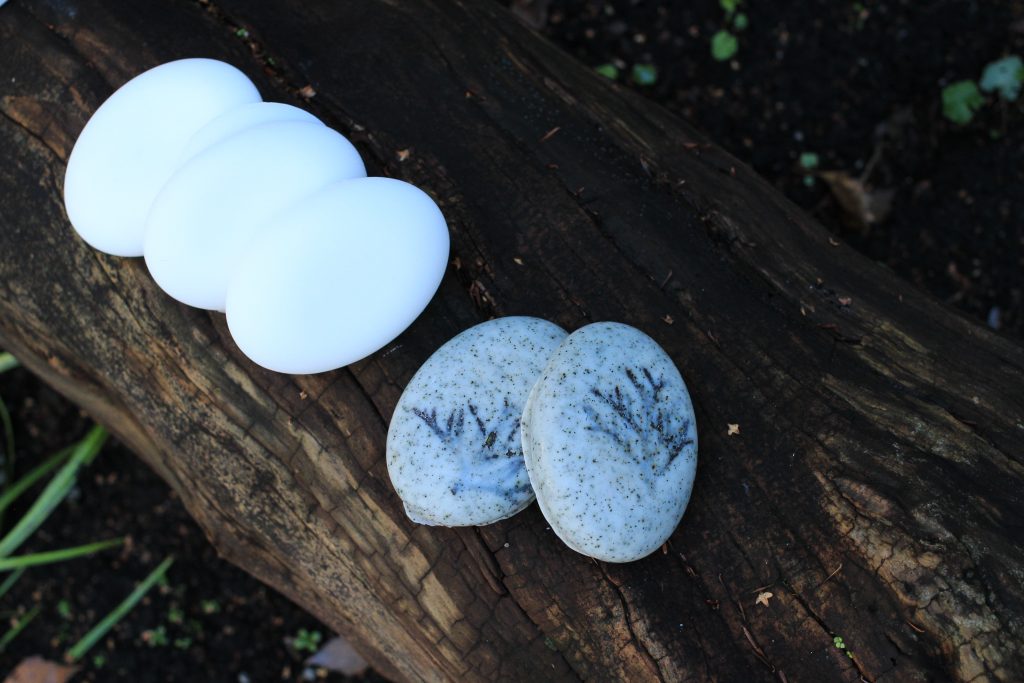
This is just a friendly reminder for people who are new to DIY zerowaste toiletry products: Don’t expect them to be the same as conventional items. Most of the ingredients are from nature, and there is a limit to resemble the chemical effects of factory-made toiletries.
For me, the main motivations for making my own zerowaste products are the value of sustainability, the benefits of natural ingredients, and how they make me feel. Using my handmade toiletries makes me feel self-cared, mindful in my mundane activities of washing myself. It’ll take time to get used to their natural textures, fragrances, and how they work, so explore different methods and experiment with various ingredients you want to try.
